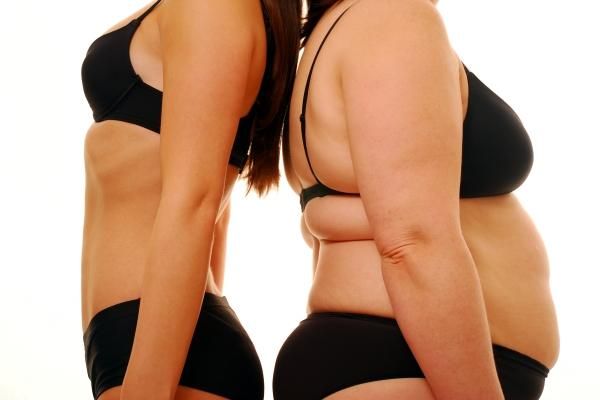What Makes a State Fat or Thin?

In Mississippi, the state government added healthy foods to vending machines in state office buildings. Some cities open school gyms to community members on weekends and afternoons, providing safe places to exercise.
Still, the Centers for Disease Control and Prevention report on obesity issued this week shows that the state is the nation's fattest for the sixth consecutive year -- and its neighboring Southern states round out the bottom of the list: Alabama, Arkansas, Indiana, Kentucky, Louisiana, Michigan, Mississippi, Missouri, Oklahoma, South Carolina, Texas and West Virginia all have obesity rates of over 30 percent.
Regionally, the obesity rate for the South was 29.5 percent, followed by the Midwest at 29 percent, the Northeast at 25.3 percent and the West at 24.3 percent.
Does geography, then, play a bigger role in the body composition of Americans ... and can it be overcome?
"There's a perception that the South has a culture that promotes the eating of certain types of food high in saturated fat and sugar, and a perception that people are less physically fit," she said. "We don't have a state-by-state report of food consumption or level of fitness, so we couldn't say globally if you live in the South you're more likely to be overweight because there's a culture and food that promotes fatness."
What we do know, Sothern says, is that more people live below the poverty line in the South, and there's a higher minority population in the South.
Sign up for the Live Science daily newsletter now
Get the world’s most fascinating discoveries delivered straight to your inbox.
Studies have shown both poverty and race to be risk factors in obesity. In fact, the two are so tightly interwoven that it's almost impossible to tease apart poverty and race in research, Sothern said.
"Poor people have lower access to healthy food and greater access to unhealthy food," she said. "If you live in a poor neighborhood with fast food and convenience stores, you're more likely to be overweight. And if your physical environment has high crime, few parks and no sidewalks, you're less likely to be physically active."
None of this, Sothern points out, is rocket science. Government and health officials are on board; consciousness is high; everyone knows what needs to be done. (For the record, that includes safe areas for kids to play, including sidewalks and bike trails, plenty of time for recess and physical education in school, healthy school lunches, and even family-based behavioral counseling for female obese teens.)
But even the best-intentioned policies amount to little if they're not enforced.
In Louisiana, for example, a law dictates that elementary and middle schools can't have vending machines. But walk into a middle school, and you likely to see one, Sothern says.
And until every piece is addressed, not much is likely to change.
NEWS: Could Air Pollution Be Making Us Fat?
Health advocates in the nation's leanest state, Colorado, are also tackling the obesity issue head-on: being the skinniest state no longer means much in a country whose collective body composition contributes to almost one-third of the world 's global obese weight. But, at the other end of the spectrum, in Colorado, consciousness is equally high.
James Hill, executive director of the Anschutz Health and Wellness Center at the University of Colorado, believes that the state with the lowest obesity rate has a responsibility to lead the country toward a healthier future.
"We can't just sit back and say we're not Louisiana or Mississippi and say everything's fine here," he said. "It's not fine. We're the best of a bad bunch. But Colorado might be the best place to turn it around. If we can't solve it here, there's little chance of solving it in more affected states. We have a responsibility to step out and take this on and come up with strategies that work."
NEWS: Nighttime Eating May Lead to Obesity
Colorado has a few built-in advantages: Mountains, open spaces and an outdoor-friendly year-round climate not only foster physical activity, but attract newcomers who already value the outdoors. And fewer people live in poverty.
The state has prioritized physical fitness: proceeds from its state lottery go toward parks and open spaces, non-profits across the state have implemented various health and wellness programs, and the Anschutz Foundation of Denver donated $15 million to the Colorado Center for Health and Wellness that Hill leads.
Like Sothern, though, Hill wishes he could pinpoint which initiatives have been most successful. His small-changes approach, for example, seems promising, but how does it compare to Michelle Obama's work with gardens and school lunches? No one knows.
"It would be helpful to know what works," he said.
Measuring the impact of each program may be tricky -- methodology would have to be established, and funding procured -- but without it, it's impossible to say what Colorado is doing right, or what Mississippi may have done wrong.
"Obesity rates are still incredibly high and increasing," Hill said. "We have so far to go, but unless we solve it, the consequences for our society will be dire."
This story was provided by Discovery News.











